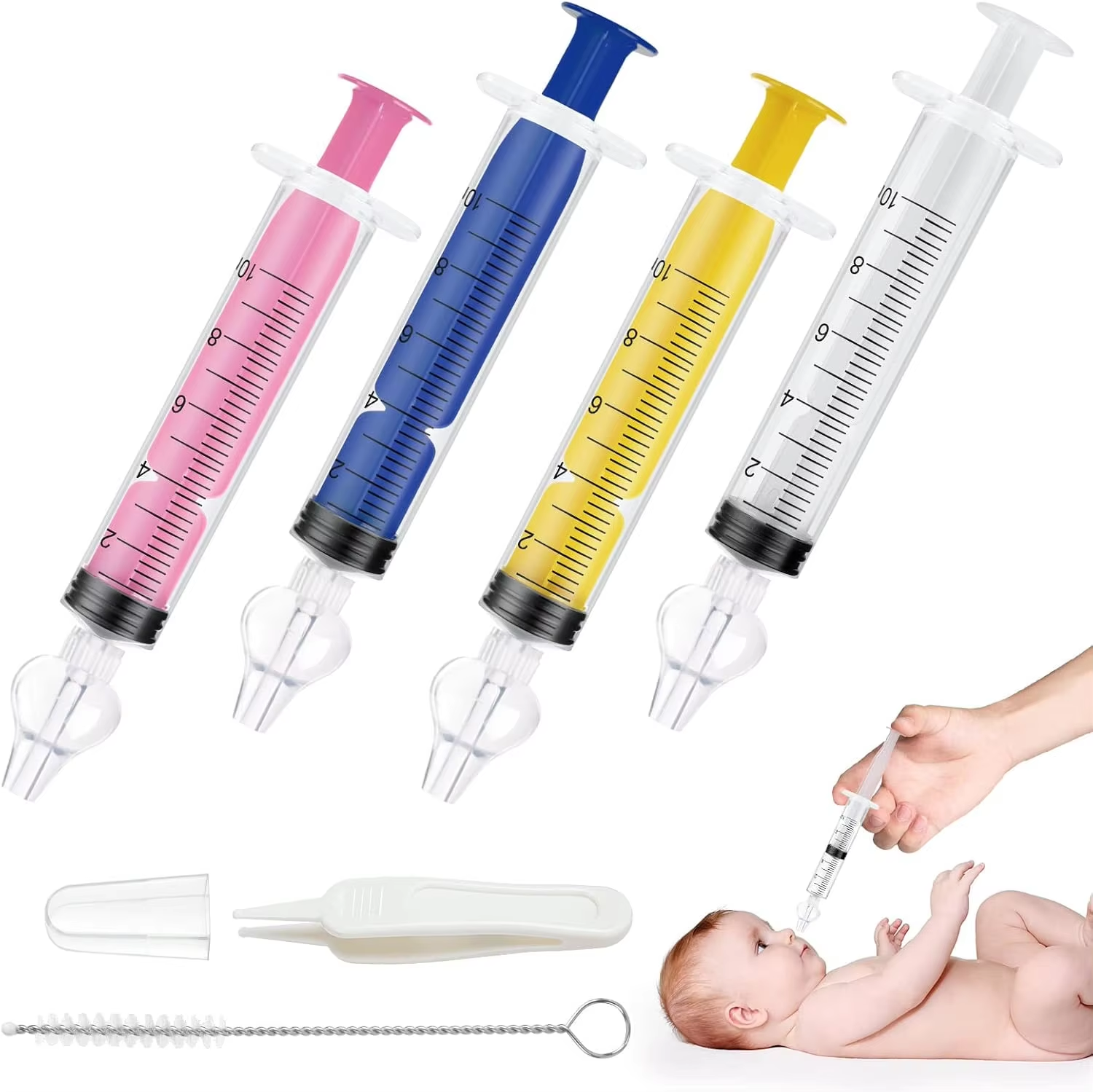Nasal Aspirator: Safe and Effective Mucus Clearance for Infants
The Urgency of Addressing Infant Nasal Congestion
For parents, nothing surpasses the importance of safeguarding their infants' health and well - being. Among the many concerns that frequently arise, the accumulation of mucus in a baby's nasal passages stands out as a common yet distressing issue. Infants, being obligate nasal breathers, rely predominantly on their noses for respiration. When their nasal passages become blocked due to mucus, it can trigger a cascade of problems. Feeding becomes a struggle as the baby may have difficulty coordinating sucking and breathing, leading to inadequate nutrition intake. Sleep is severely disrupted, with the baby waking up frequently, gasping for air, and becoming increasingly irritable. This not only affects the baby's comfort but also takes a toll on the parents, who often lose sleep worrying about their little one's well - being. A nasal aspirator emerges as a crucial ally in this situation, offering a safe and effective means to clear mucus, allowing infants to breathe freely, feed properly, and sleep soundly.
Unraveling the Types of Nasal Aspirators
When it comes to choosing a nasal aspirator, parents are presented with a variety of options, each with its own unique features and advantages.
Bulb Syringes: The Traditional Choice
Bulb syringes are the most classic type of nasal aspirator. Crafted from soft rubber, they consist of a bulb that, when squeezed, expels air. When the bulb is then placed near the nostril and released, it creates a gentle suction that draws out mucus. Their simplicity makes them incredibly user - friendly, even for first - time parents. They are also usually the most budget - friendly option, making them accessible to a wide range of families. However, the suction strength of bulb syringes can vary depending on how firmly the bulb is squeezed, and they may require more frequent cleaning to maintain hygiene.
Electric Aspirators: The Automated Solution
Electric aspirators offer a more modern and automated approach to mucus removal. Powered by electricity, they provide consistent suction levels, eliminating the need for parents to manually control the suction strength. These aspirators often come with additional features such as adjustable suction settings, allowing parents to customize the strength based on their baby's age and the severity of congestion. They are also generally more efficient at removing mucus, especially in cases of thick or stubborn secretions. However, they are typically more expensive than bulb syringes and require a power source, which may limit their usability in certain situations.
Manual Aspirators: The Hands - on Option
Manual aspirators with a mouthpiece operate on the principle of parents creating suction by gently blowing into the device. While this method can be highly effective, it does require some practice to master the right amount of suction to avoid causing discomfort to the baby. Some manual aspirators come with built - in filters to prevent any backflow of mucus, ensuring a safer and more hygienic experience.
Mastering the Safe and Effective Use of Nasal Aspirators
Proper usage of a nasal aspirator is essential to ensure both the safety and effectiveness of mucus clearance. Before starting the process, it is crucial to create a calm and comfortable environment for the baby. A fussy or restless baby is more likely to resist the procedure, increasing the risk of injury. Using saline nasal drops prior to aspiration can work wonders. These drops help to moisten and loosen the thick mucus, making it easier to remove. When inserting the tip of the aspirator into the nostril, it should be done gently and only to a shallow depth to avoid damaging the delicate nasal tissues. For bulb syringes, the correct technique involves squeezing the bulb before insertion and then slowly releasing it to create suction. Electric aspirator users should carefully follow the manufacturer's instructions, paying close attention to the recommended suction levels and usage duration. After each use, thorough cleaning of the aspirator is non - negotiable. Dismantling the parts (if possible) and washing them with warm, soapy water, followed by proper rinsing and air - drying, helps prevent the growth of bacteria and ensures the device remains hygienic for the next use.
Determining the Right Frequency of Use
Parents often grapple with the question of how often they should use a nasal aspirator. As a general rule, it should be used as needed, especially when the baby shows clear signs of nasal congestion, such as noisy breathing, difficulty feeding, or restlessness. However, overuse can have its drawbacks. Frequent suctioning can irritate the nasal mucosa, leading to redness, swelling, and even bleeding in severe cases. To strike the right balance, parents should closely monitor their baby's symptoms. If the congestion persists or worsens despite regular use of the aspirator, or if the baby shows other signs of illness such as a fever or cough, it is advisable to consult a pediatrician promptly. The pediatrician can provide personalized advice based on the baby's specific condition and may recommend additional treatments if necessary.
The Future of Nasal Aspirators: Trends and Innovations
The baby care product market is constantly evolving, and nasal aspirators are no exception. Manufacturers are increasingly focusing on innovation to enhance the functionality and user - experience of these devices. Newer models are being developed with adjustable suction levels that can be fine - tuned according to the baby's age, weight, and the nature of the congestion. Quieter operation is another key area of focus, as noisy aspirators can startle the baby and make the mucus removal process more difficult. Ergonomic designs are also becoming more prevalent, ensuring that the aspirator fits comfortably in the parent's hand, reducing fatigue during use. Additionally, there is a growing trend towards using eco - friendly materials in the manufacturing of nasal aspirators. Biodegradable plastics and sustainable production methods are being adopted, appealing to environmentally conscious parents who want to make a positive impact on the planet while caring for their babies.
In conclusion, a nasal aspirator is an indispensable tool for parents navigating the challenges of infant nasal congestion. By understanding the different types available, mastering the correct usage techniques, determining the appropriate frequency of use, and staying updated on the latest industry trends, parents can effectively and safely clear their babies' nasal passages, providing much - needed relief and comfort. As always, when in doubt, seeking the advice of a healthcare professional remains the best course of action to ensure the optimal health and well - being of infants.
Table of Contents
- Nasal Aspirator: Safe and Effective Mucus Clearance for Infants
- The Urgency of Addressing Infant Nasal Congestion
- Unraveling the Types of Nasal Aspirators
- Mastering the Safe and Effective Use of Nasal Aspirators
- Determining the Right Frequency of Use
- The Future of Nasal Aspirators: Trends and Innovations

